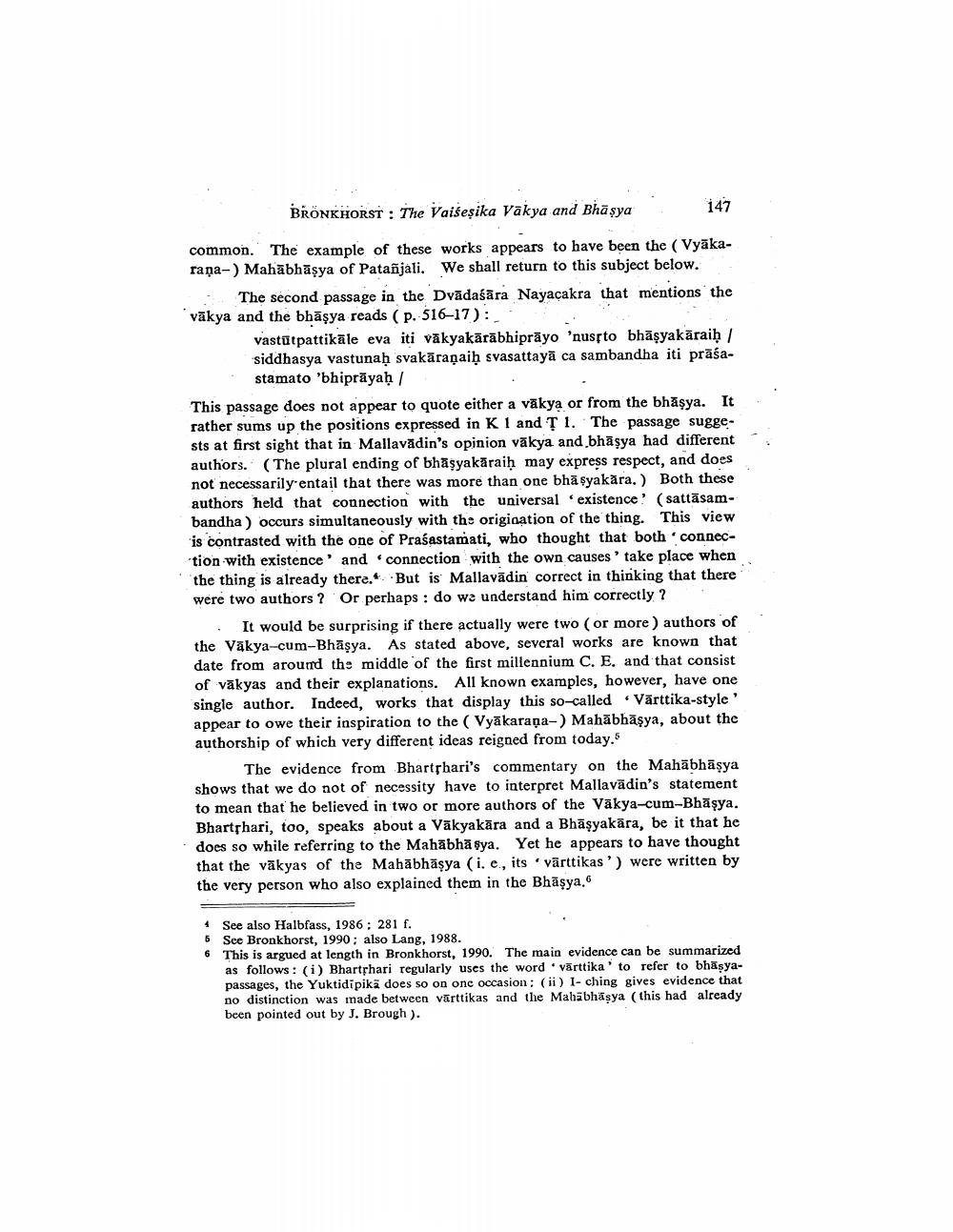________________
BRONKHORST : The Vaišeșika Vākya and Bhāşya
:
147
common. The example of these works appears to have been the (Vyākaraņa-) Mahābhāşya of Patañjali. We shall return to this subject below.
The second passage in the Drādaśāra Nayacakra that mentions the vākya and the bhāşya reads (p. 516-17):
vastutpattikāle eva iti vākyakārābhiprāyo 'nusrto bhāșyakāraih / siddhasya vastunaḥ svakāraṇaih svasattayā ca sambandha iti prāśa
stamato 'bhiprāyaḥ / This passage does not appear to quote either a vākya or from the bhāşya. It rather sums up the positions expressed in K 1 and 1. The passage sugge. sts at first sight that in Mallavădin's opinion vākya and bhāşya had different authors. (The plural ending of bhāsyakāraih may express respect, and does not necessarily entail that there was more than one bhāsyakāra.) Both these authors held that connection with the universal 'existence? (sattāsambandha) occurs simultaneously with the origination of the thing. This view is contrasted with the one of Prasastamati, who thought that both connection with existence and connection with the own causes' take place when the thing is already there... But is Mallavādin correct in thinking that there were two authors ? Or perhaps : do we understand him correctly?
It would be surprising if there actually were two or more ) authors of the Vakya-cum-Bhasya. As stated above, several works are known that date from around the middle of the first millennium C. E. and that consist of vākyas and their explanations. All known examples, however, have one single author. Indeed, works that display this so-called Vārttika-style' appear to owe their inspiration to the (Vyakarana-) Mahābhāşya, about the authorship of which very different ideas reigned from today.
The evidence from Bhartshari's commentary on the Mahābhāsya shows that we do not of necessity have to interpret Mallavādin's statement to mean that he believed in two or more authors of the Väkya-cum-Bhäşya. Bhartshari, too, speaks about a Vākyakāra and a Bhāşyakāra, be it that he does so while referring to the Mahābhā sya. Yet he appears to have thought that the vākyas of the Mahābhāşya (i. e., its vārttikas') were written by the very person who also explained them in the Bhāșya.
4 See also Halbfass, 1986 : 281 f. 5 See Bronkhorst, 1990; also Lang, 1988. 6 This is argued at length in Bronkhorst, 1990. The main evidence can be summarized
as follows: (i) Bharthari regularly uses the word 'vārttika' to refer to bhäşyapassages, the Yuktidipikā does so on one occasion; (ii) I-ching gives evidence that no distinction was made between vārtikas and the Mahābhāşya (this had already been pointed out by J. Brough ).




